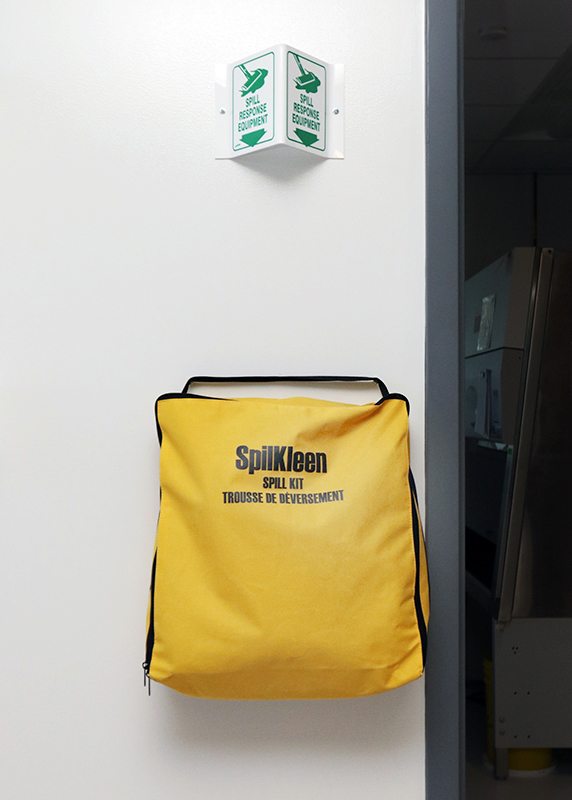Hazardous Materials Spills and Leaks
At Toronto Metropolitan University, hazardous material spills are rare but do happen. Understanding the types of spills and what to do in case they happen is critical to ensure the safety of students, faculty, staff and visitors.
Spills involving chemicals
The expectation at TMU is that laboratory users are qualified to clean up minor spills, but should never assume the nature of the spill unless being directly involved. Solvents and flammable liquids are the highest risk (when it comes to emergencies). Directly after a spill, it is crucial that users stabilize the spill (i.e. cover or neutralise), and review the safety data sheet (SDS) information of the spilled material (if it’s known).
There are two types of chemical spills that can happen in any lab.
Major spills
Major spills are high in quantity and/or very hazardous in nature. The size and/or type of material make these spills an immediate threat to the health and safety of lab staff, other personnel and/or the environment.
Clean up protocol of major spills
If the spill is large or if you are unsure how to classify or manage it, immediately call TMU Security at 416-979-5040 or dial 555040 from any internal phone. Follow these instructions for major chemical spills:
- Avoid breathing vapours.
- Quickly identify the spilled material if you can do so safely (based on knowledge of chemical and lab conditions at the time of spill).
- Block drains – if present, throw some absorbing materials on the spill (from your spill kit).
- If the spill involves a flammable liquid, turn off all ignition sources if you can do so safely.
- Make sure all fume hoods are on.
- Alert people in the area and evacuate, closing all doors.
- Lock doors and post warning signs (e.g. do not enter, danger).
Minor spills
Minor spills are small in quantity and/or not too hazardous in nature. The size and/or type of material are not an immediate threat to the health and safety of lab staff, other personnel and/or the environment.
Clean up of minor spills
If the spill is minor, then you should be able to clean up the spill yourself.
- Wear personal protective equipment including safety goggles, gloves and a long-sleeved lab coat during cleanup.
- Confine the spill to a small area by using the absorbent pad from your spill kit to absorb spilled materials.
- When all liquid is absorbed, pick up any debris with a broom and dustpan (pick up larger glass pieces with tongs).
- Always clean from outside towards the centre of the spill.
- Place the saturated absorbent and broken glass in the solid waste container or in the polyethylene bag.
- Label the container or bag with the hazardous waste information and include it in the next hazardous waste collection.
- Clean the spill area with soap and water.
- Replenish the materials used in the spill kit as soon as possible by using the contact information provided in the spill kit.
- Fill out the incident report form found in the spill kit and submit a copy to Environmental Health and Safety and to your supervisor.
Universal spill kits
At TMU, each lab that has chemical hazards is equipped with a universal spill kit. This kit, contained in a bright yellow bag, is mounted to the wall in a visible area.
Each spill kit will contain at minimum the following:
- 5 universal pads
- 2 polyethylene bags
- 1 pair of goggles
- 1 pair of gloves
- 1 scrub pad
- 1 hazardous waste label
- 1 pair of tongs
- 1 scoop and brush
- 1 marker or pen
- 5 incident report papers

Users must make sure to keep it fully stocked and easily accessible. Proper training is required for all users. Please contact Environmental Health and Safety at ehs@torontomu.ca or 416-979-5000, ext. 553770 for training on how to use the kit materials, or if your area does not have a spill kit.